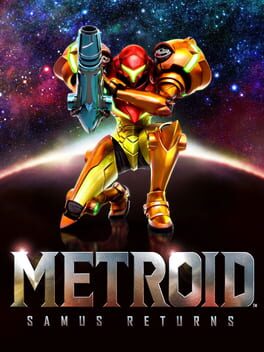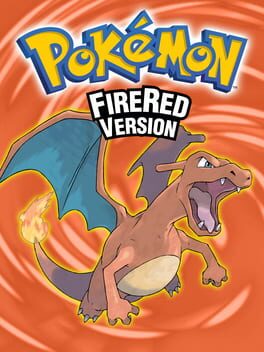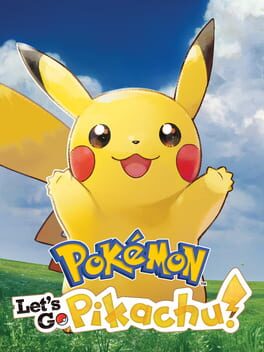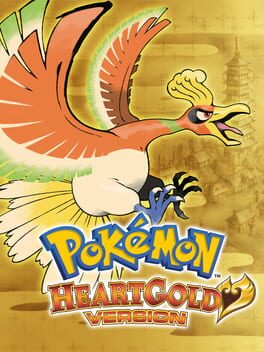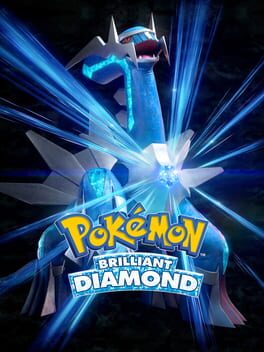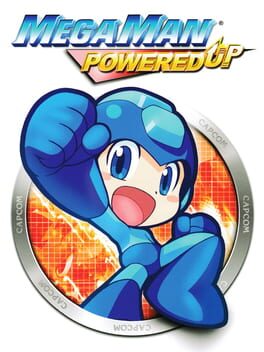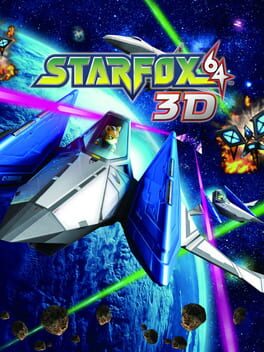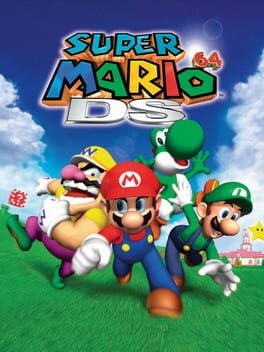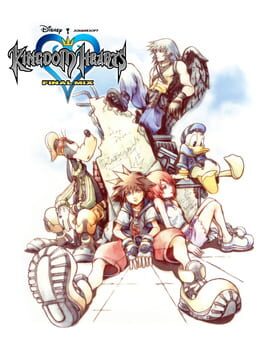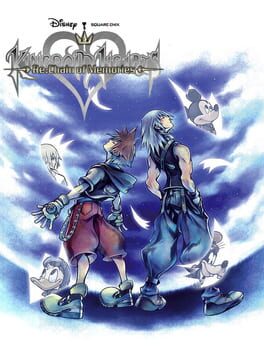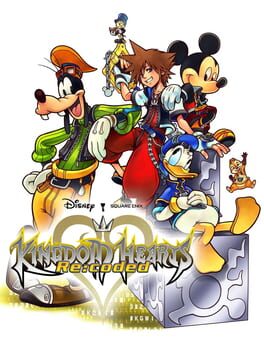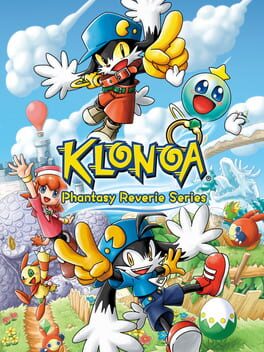Remakes are not Replacements
I generally dislike the sentiment that remakes or even remasters aught to be considered "replacements" for their original versions. And in this list I'm gonna be giving case-by-case reasons for why, even for remakes I do like better than the originals. It's fine if you like these remakes or remasters, I'm merely pointing out that these DON'T replace the originals. This isn't a "remakes bad" callout list so much as it's comparing and contrasting remakes with their originals.
As a catch all: visuals are always going to be an element. Because sure, you can look at newer visuals in newer versions, but I usually don't see those as flat-out "improvements" so much as they're just "different."
As a catch all: visuals are always going to be an element. Because sure, you can look at newer visuals in newer versions, but I usually don't see those as flat-out "improvements" so much as they're just "different."
23 Games
This game is fine, overall. It has finer movement controls, a more consistent space jump and beam effects stack rather than replace each other, but it otherwise pales as a Metroid II remake, if you ask me. Its atmosphere took the most noticeable hit, because this remake features much more fleshed out and colorful environments, compared to Metroid II's all-black backgrounds and overall darker tone even compared to most other Metroid games. The screen being way zoomed out also interferes with how claustrophobic Metroid II felt; a lot of that game is feeling like you're stuck in a super dark cave and can barely even see a few feet in front of you. Even if this was a move made due to hardware restraints, that doesn't mean that dark, dank, and claustrophobic is simply the vibe it gave off, whether intended or not.
This game is also a fine example of how "quality of life" features don't always make a game better. This remake adds fast travel points via the teleport stations, which on paper is a sound addition due to Metroid II's overall more linear structure making it harder to backtrack to previous areas. Except what this absolutely destroys is the sense of being trapped miles underground in a hostile environment, because you're never that far away from a teleporter that can take you straight back to the surface if you want.
It also really muddies up the original Metroid II's themes, with II in the end having a much more somber and regretful tone to it, especially in the ending as you quietly travel back to the surface with a song that feels rather bittersweet. Which makes the remake feel rather tone-deaf both in how it give all these glory kill QTEs to the various Metroid fights and adds a final-final boss fight rather than ending as you get back to the surface, with the same theme as before having a new, more urgent tone to it that does not match the original feeling at all.
I don't like to just say "remake bad" but I will absolutely say "remake completely misses the point of the original"
This game is also a fine example of how "quality of life" features don't always make a game better. This remake adds fast travel points via the teleport stations, which on paper is a sound addition due to Metroid II's overall more linear structure making it harder to backtrack to previous areas. Except what this absolutely destroys is the sense of being trapped miles underground in a hostile environment, because you're never that far away from a teleporter that can take you straight back to the surface if you want.
It also really muddies up the original Metroid II's themes, with II in the end having a much more somber and regretful tone to it, especially in the ending as you quietly travel back to the surface with a song that feels rather bittersweet. Which makes the remake feel rather tone-deaf both in how it give all these glory kill QTEs to the various Metroid fights and adds a final-final boss fight rather than ending as you get back to the surface, with the same theme as before having a new, more urgent tone to it that does not match the original feeling at all.
I don't like to just say "remake bad" but I will absolutely say "remake completely misses the point of the original"
Bonus content is bonus content, but it also has a less satisfying and climactic ending compared to the original Metroid 1. Zero Mission fares better in preserving the original game's atmosphere than Samus Returns does, but Metroid 1 still felt darker and grodier.
While a very pretty and very faithful recreation, even adding a lot more visual elements to it like slightly reanimated cutscenes and visual effects. But it's still missing out on a few bits of atmosphere, like beam weapons no longer lighting dark rooms and mirror reflection effects no longer being present.
Here it's mostly just a nebulous "Doesn't EXACTLY feel like the originals"; again it's extremely faithful and is definitely one of the best-looking Switch games, but the original Prime still has a fairly timeless look to it. Remastered preserves the visual style, but of course isn't 1:1, and I'd still say older 3D games still have a distinct look to them that making a game more "up to date" simply doesn't "fix."
Here it's mostly just a nebulous "Doesn't EXACTLY feel like the originals"; again it's extremely faithful and is definitely one of the best-looking Switch games, but the original Prime still has a fairly timeless look to it. Remastered preserves the visual style, but of course isn't 1:1, and I'd still say older 3D games still have a distinct look to them that making a game more "up to date" simply doesn't "fix."
As much as I like the moodier lighting in this version of the game, some details also tend to get muddied out in how much darker it is compared to the original being more saturated. Also something to be said about how the original runs at 60 FPS, but this runs at 30.
This one aims to be like the original more than the typical Pokemon remake tends to do, and of course it's hard to complain with optional areas that offer more to do, but it still briefly derails the original to introduce the new Sevii Isles before booting you back to Pokemon Red/Blue/Green.
As much as I dislike this game, it is at least a bit more in "re-imagining" territory than FireRed, with all wild battles just being the Pokemon Go-esque catch screen. I just also can't help but notice it tries to be a 1:1 remake otherwise, up to having the same layouts with the same blockiness to it but with an art direction that feels more concerned with imitation than recreation.
Other than visuals and using a more modern (and arguably more balanced) battle engine, it's hard to poke holes here. This one permits you to evolve certain Pokemon that couldn't before, like Yanma, Tangela, etc, but it's also easy enough to simply not evolve them.
A bit more nebulous but the mood isn't quite the same. It's still homely and nostalgic like the original Gold and Silver felt, but the soundtrack in the remakes go for a bit more bombast that wasn't there before, which takes some of the modesty out.
A bit more nebulous but the mood isn't quite the same. It's still homely and nostalgic like the original Gold and Silver felt, but the soundtrack in the remakes go for a bit more bombast that wasn't there before, which takes some of the modesty out.
This isn't a "differences bad" list asking for remakes to be homogeneous, so much as it's pointing out remakes shouldn't be considered replacements, especially not as an ideal, and I think ORAS is a good example of this. It adds Megas as a new feature to the game and changes a lot of the tone, both with big redesigns of most of the characters and a whole continuation of the story in a postgame arc. It becomes less of a modernization to emulate the original and more something that can be taken in as its own thing.
The Pokemon remake most adverse to change, and it shows. It focuses on shallow QoL changes that admittedly feel better than having to lug around a couple of HM-dedicated Pokemon, but as such just loops back around to the issue I have with these kinds of remakes that try to be replacements. Because ultimately this isn't going to be remembered as much as the original game is, to which I have to ask why couldn't you just port the originals, then?
I don't want to devolve to calling the newer versions outright "looking bad" but this feels like an odd case where the presentation in places is just outright worse than the original Kirby's Adventure, with more platforms weirdly detached from anything and floating on nothing and the tower-scrolling effect from the Butter Building stages absent in favor of a fog effect in its place, which doesn't look anywhere near as impressive. It's such a weird sacrifice given the otherwise nice spritework.
Replacing Dedede's fight theme with the Melee Fountain of Dreams theme for seemingly no reason other than Melee was recent also feels odd and out of place to me.
Replacing Dedede's fight theme with the Melee Fountain of Dreams theme for seemingly no reason other than Melee was recent also feels odd and out of place to me.
In the original Super Star, the Arena felt a bit more like a bonus challenge than the real and true ending. In Ultra, you get a less satisfying ending because the game doesn't end at defeating the final boss, as it opens up into more side modes and the new closest thing there is to a climax is the True Arena.
Aside from added bonus content, it mostly features a couple new copy abilities and a slightly different visual style and minor QOL changes. Though as usual with more subdued remakes, this mostly boils down to preference for style.
This serves as a fine example point of comparison of how R&C has been morphed over time. The original Ratchet & Clank was quite dry and satirical in its humor, very often making a mockery of capitalism and consumerism, with how often the zany in-universe commercials were juxtaposed against the dry delivery of the characters when you actually meet them "in-person." The remake just maintains the zaniness and whimsy throughout, undermining this whole point to a point where the remake is hardly even addressing it anymore.
Again I don't wanna devolve into just saying "thing bad" too hard but also the dialogue in the remake is insufferable
Again I don't wanna devolve into just saying "thing bad" too hard but also the dialogue in the remake is insufferable
This one leans a little harder into re-imagining with how it allows you to play all 8 robot masters (plus Roll), and even adds two whole robot masters so that I can say "all 8 robot masters", and changes a lot of the level design to accommodate for the handheld screen crunch, as well as expanding the shorter levels a bit, especially noticeable for Guts Man's stage.
It does also add dialogue scenes that give texture to the story and flesh out the personality of the robot masters, but still take up a lot of time between entering a boss room and fighting them, breaking up the pace a bit. It still gives the original space to exist on its own.
It does also add dialogue scenes that give texture to the story and flesh out the personality of the robot masters, but still take up a lot of time between entering a boss room and fighting them, breaking up the pace a bit. It still gives the original space to exist on its own.
Like Powered Up, it leans harder into re-imagining with a new Vile campaign and an aim to flesh out the story around the original Mega Man X. It still has the Powered Up problem of pre-boss dialogue scenes interrupting the flow, but also moved around all the Dr. Light capsules. With the valiant intention of mixing the game up for those that have already played Mega Man X. I appreciate that even as someone that vastly prefers the original.
While an impressive tech demo of the 3DS, this one otherwise is extremely faithful and is one of those that largely will depend on whether you like the updated graphics or not. But also the extra wrinkle is the different voice work, since they recasted the whole game for this remake, and it is hard to shake off the memetic iconography that is the voice acting of the original.
Honestly? This almost just might be the perfect "faithful remake". There's literally a button to switch back and forth between updated and classic graphics to almost seamlessly change, with nothing but a fade to black to worry about. Some of the updated graphics don't match the geometry of the original game but it's otherwise the best of both worlds with this one.
It's almost unhinged how much this one changes. It's basically a completely new game that just uses SM64 as a base. Even if you do nothing but play as Mario as soon as you unlock him, there's hat switching and new powerups and even new stars even completely new levels. Ridiculous.
This is more petty complaining than the other entries and a catch-all for all the Final Mix versions but god I wish there was a way to change the colors of the Heartless back to the originals cause all the Shiny Heartless look like ass.
Besides the visual elements, there's a lot to this game that just comes with introducing a third dimension. It's in a lot of ways, the same game, but in an equal amount of ways, a completely different one.
I haven't played the original Coded, especially since I didn't own a Japanese mobile phone in the 2000s, but I would have to assume what I said about RE:COM applies here as well.
While mostly faithful, it majorly differs in how it presents itself, especially compared to the original Door to Phantomile, being a 2.5D platformer with characters that used 2D sprites in 3D environments. The style is almost entirely intact, but I do notice what hits a lot less hard in the remake is Ghadius, seeing as all the characters up to that point are 2D sprites while Ghadius himself is entirely 3D, which very well serves to make him look scary and otherworldly. He's still a tonal vibe check when you first lay eyes on him but I just feel like the impact is stronger in the original.
SPOILERS FOR FFVII REMAKE
.
.
.
.
.
.
.
.
.
.
My very point of making this list is quite literally a vital plot point in this remake lmao.
.
.
.
.
.
.
.
.
.
.
My very point of making this list is quite literally a vital plot point in this remake lmao.
